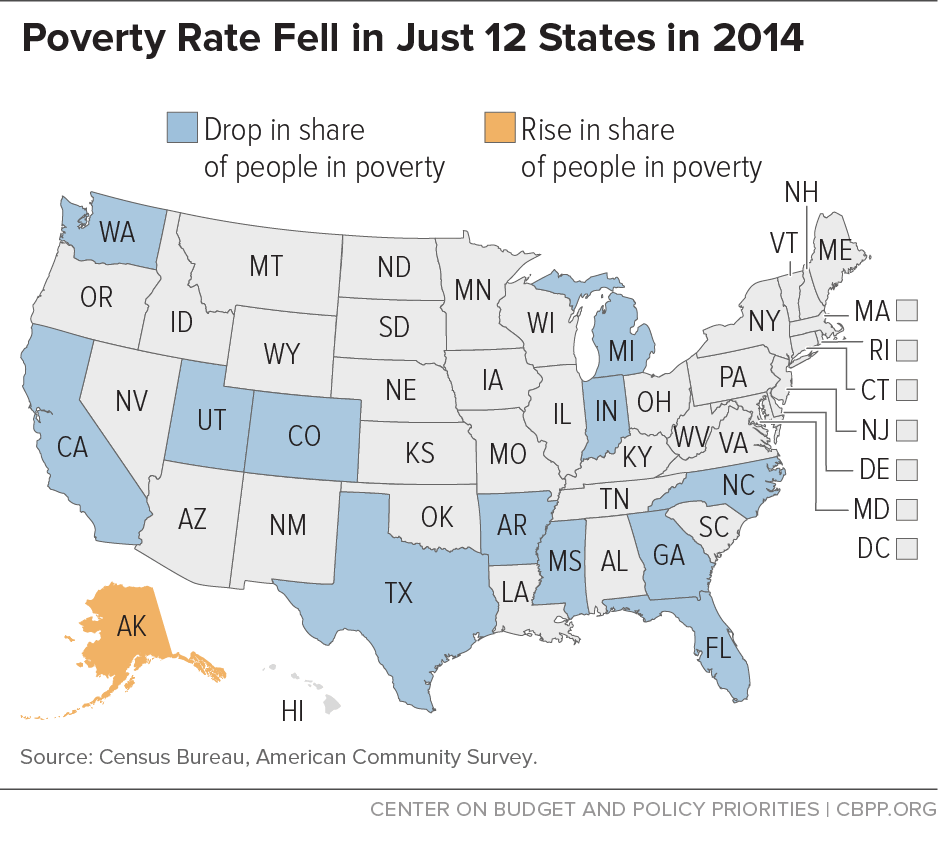BEYOND THE NUMBERS
While every state made important gains in health coverage in 2014, the new Census figures show, few states made progress in easing their residents’ struggles to meet basic needs. Both the gains and shortcomings underscore the critical role that state and federal investments can play in helping people attain economic security and a better quality of life.
The Census’ American Community Survey (ACS) is the nation’s main source of state and local demographic data, and it provides reliable information about national income and poverty trends. Here’s what its newest data show about poverty and income in 2014:
- The official poverty rate fell in just 12 states and rose in one (see map).
- Among children, progress was even less impressive. Child poverty rates fell in just nine states and rose in three.
- Median household income rose in 16 states and fell in one.
Such limited progress is disappointing given improvements in employment nationwide in 2014, including an increase in the number of Americans working full-time. A slow economic recovery and a large and persistent income gap between households at the top and bottom are partly to blame.
But states can do more to address their residents’ economic struggles. For example, they can raise the state minimum wage in conjunction with creating or improving the state’s earned income tax credit; they can connect more adults and children in dire economic straits to a full range of federal supports, including nutrition, housing, and unemployment insurance; and they can reinvest in areas like K-12 schools and higher education, both of which are foundations of a strong state economy.

